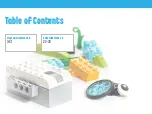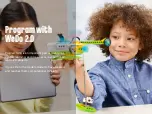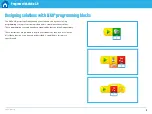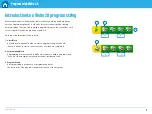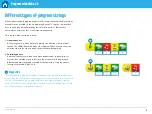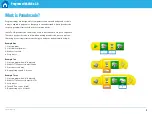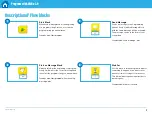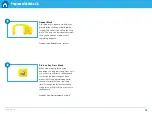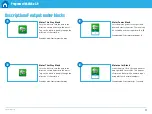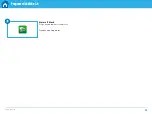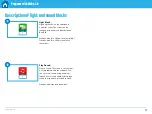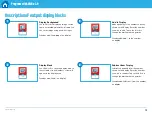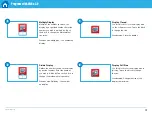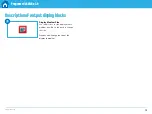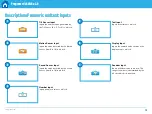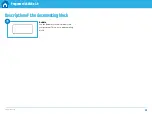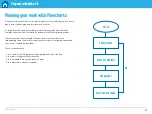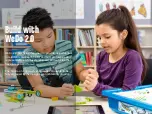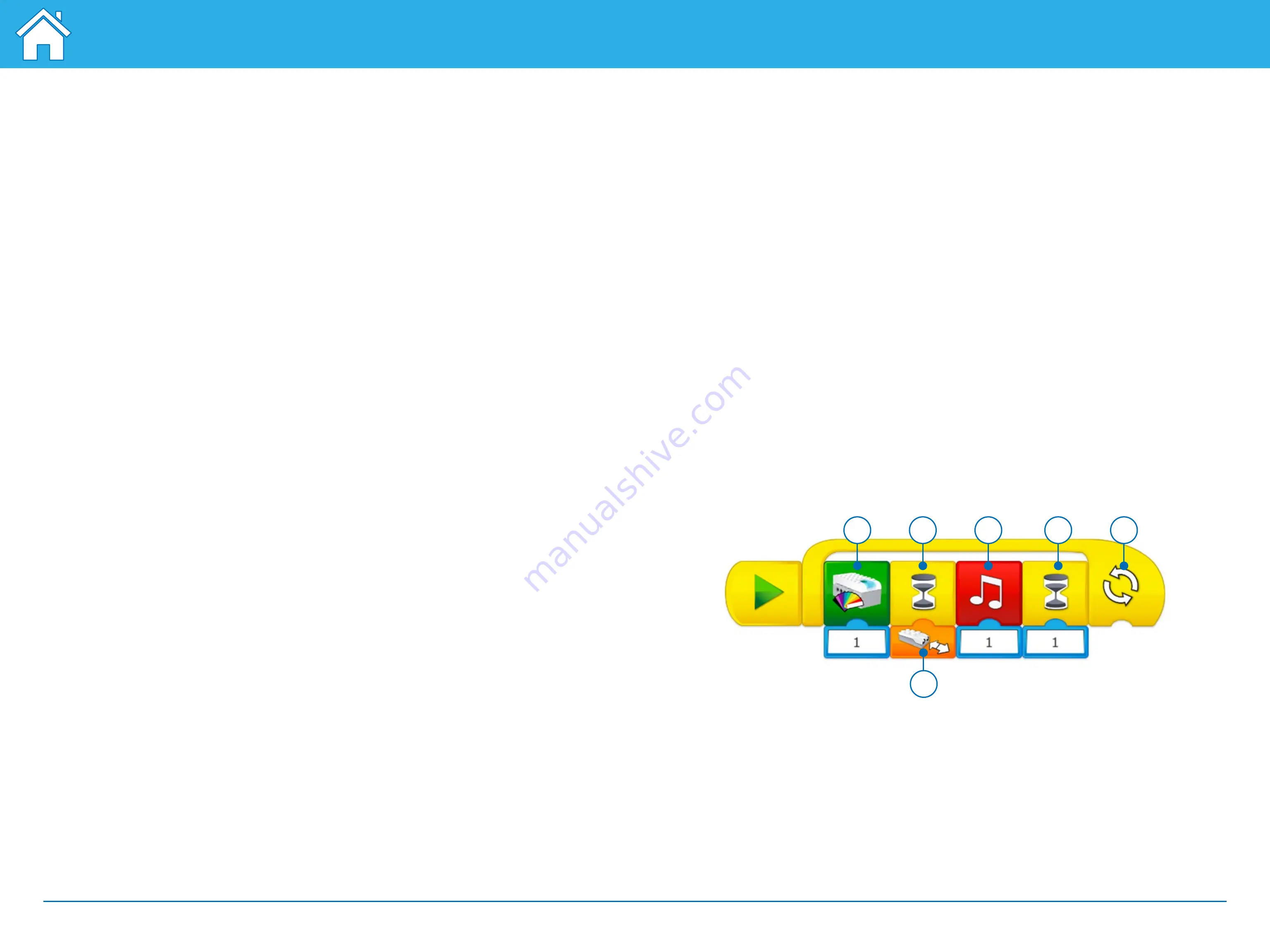
1
1
3
3
4
2
©2017 The LEGO Group.
7
Program with WeDo 2.0
6. Conditions
Conditions are used by students in order to program actions that are to be
executed only under certain circumstances. Creating conditions within a
program means that some part of the program will never be executed if the
condition is never met. For example, if the Tilt Sensor is tilted left, the motor will
start, and if the sensor is tilted right, the motor will stop; if the Tilt Sensor never
tilts left, the motor will never start and if it never tilts right, then the motor will
never stop.
In developing program strings as part of their solutions, students will organize a
series of actions and structures that will make their models come to life.
Here are some of the simplest programming principles your students can use:
1. Output
Output is something that is controlled by the program the students are writing.
Examples of outputs for WeDo 2.0 are sounds, lights, display, and turning motors
on and off.
2. Input
Input is information that a computer or device receives. It can be inputted
through the use of sensors in the form of a numeric or text value. For example,
a sensor that detects or measures something (such as distance) converts that
value into a digital input signal so it can be used in a program.
3. Events (Wait for)
Students can tell their program to wait for something to happen before
continuing to execute the sequence of actions. Programs can wait for a specific
amount of time, or wait for something to be detected by a sensor.
4. Loop
Students can program actions to be repeated either forever or for a specific
length of time.
5. Functions
Functions are a group of actions that are to be used together in specific
situations.
For example, the group of blocks that could be used to make a light blink would
together be called, “the blink function”.
Programming principles


